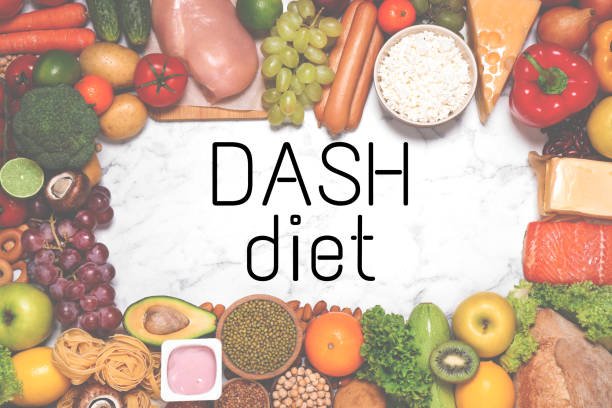
Balanced diet food background. Selection of various paleo diet products for healthy nutrition. Superfoods, meat, fish, legumes, nuts, seeds, greens and vegetables
The Paleo Diet, short for the Paleolithic Diet, has gained significant popularity in recent years. Advocates argue that it mimics the diet of our ancestors, emphasizing whole foods while excluding processed items.
However, as with any dietary trend, it’s essential to critically evaluate both its merits and potential drawbacks. In this comprehensive exploration, we will delve into the intricacies of the Paleo Diet, addressing common questions and shedding light on its impact on health.
Why Paleo Diet Is Unhealthy
Understanding the Paleo Diet
A. Principles of the Paleo Diet
The Paleo Diet is rooted in the idea of consuming foods presumed to have been available to early humans during the Paleolithic era. This includes a focus on lean meats, fish, fruits, vegetables, nuts, and seeds while excluding grains, legumes, dairy, processed foods, and refined sugars.
B. Emphasis on Whole Foods
One of the primary tenets of the Paleo Diet is the emphasis on whole, unprocessed foods. This promotes nutrient density, providing essential vitamins and minerals that proponents argue are lacking in modern diets.
C. Elimination of Processed Foods
Processed foods, often criticized for their high salt, sugar, and unhealthy fat content, are excluded from the Paleo Diet. This restriction aims to reduce the intake of additives and preservatives linked to various health issues.
D. Focus on Lean Proteins, Fruits, and Vegetables
The diet encourages the consumption of lean proteins, such as poultry, fish, and grass-fed meats, alongside an abundance of fruits and vegetables. Proponents argue that this combination offers a rich source of essential nutrients.
Pros of the Paleo Diet
A. Weight Loss Potential
One of the touted benefits of the Paleo Diet is its potential for weight loss. By eliminating processed foods and focusing on whole, nutrient-dense options, individuals may naturally reduce calorie intake and achieve weight loss.
B. Improved Blood Sugar Levels
The emphasis on low-glycemic fruits and vegetables in the Paleo Diet may contribute to better blood sugar control. This can be particularly beneficial for individuals with insulin resistance or diabetes.
C. Increased Nutrient Intake
With an emphasis on a variety of fruits, vegetables, and lean proteins, proponents argue that the Paleo Diet provides a wide range of essential nutrients, contributing to overall health and well-being.
D. Enhanced Satiety and Reduced Cravings
The inclusion of protein and fiber-rich foods in the Paleo Diet may promote a feeling of fullness, potentially reducing cravings and overeating.
Stay tuned for the next section where we’ll delve into the potential drawbacks and risks associated with the Paleo Diet.
Cons of the Paleo Diet
While the Paleo Diet boasts several potential benefits, it is essential to address the criticisms and concerns associated with this dietary approach.
A. Lack of Whole Grain Inclusion
Critics argue that the exclusion of whole grains from the Paleo Diet may lead to a deficiency in fiber, essential for digestive health. Whole grains provide a spectrum of nutrients, and their omission could impact overall dietary balance.
B. Potential Nutrient Deficiencies
Despite the focus on nutrient-dense foods, some experts express concerns about potential nutrient deficiencies, particularly in calcium and vitamin D, due to the exclusion of dairy products from the Paleo Diet.
C. Limited Dairy Consumption
The avoidance of dairy, a significant source of calcium and other essential nutrients, raises questions about bone health and long-term well-being. Individuals following the Paleo Diet may need to seek alternative sources for these vital nutrients.
D. Sustainability Challenges
From an environmental perspective, the Paleo Diet faces scrutiny due to the increased demand for animal products. Critics argue that promoting a diet high in animal protein may not be sustainable in the long run.
The Risks of the Paleo Diet
A. Impact on Cardiovascular Health
Some studies suggest that the emphasis on red meat and saturated fats in the Paleo Diet may impact cardiovascular health, potentially elevating cholesterol levels. This raises concerns, especially for individuals with existing heart conditions.
B. Potential for Overconsumption of Saturated Fats
While the Paleo Diet promotes the consumption of healthy fats, there is a risk of overemphasizing saturated fats, which, in excess, may contribute to cardiovascular issues. Balancing fat intake is crucial for heart health.
C. Risk of Nutrient Imbalance
Exclusion of entire food groups, such as grains and legumes, may lead to an imbalance in essential nutrients. Achieving a well-rounded nutrient profile requires careful planning and consideration in adhering to the Paleo Diet.
D. Considerations for Long-Term Health
Long-term adherence to the Paleo Diet raises questions about sustained nutritional adequacy and potential health implications. Monitoring health markers and seeking professional guidance become crucial aspects of prolonged dietary practices.
In the upcoming sections, we will delve into the negative effects of the Paleo Diet, exploring its impact on digestive health, kidney function, and calcium intake. Stay tuned for a comprehensive examination of these critical aspects.
Negative Effects of the Paleo Diet
As with any dietary plan, it’s crucial to explore potential negative effects. While the Paleo Diet has garnered praise for its emphasis on whole foods, critics point to certain aspects that may pose challenges to one’s well-being.
A. Digestive Issues and Fiber Intake
The Paleo Diet often falls short in terms of fiber intake due to the exclusion of grains and legumes, which are primary sources of dietary fiber. Insufficient fiber can lead to digestive issues such as constipation and may impact long-term gut health.
B. Potential Impact on Kidney Health
The emphasis on high protein intake, a hallmark of the Paleo Diet, may raise concerns about kidney health, particularly for individuals with pre-existing kidney conditions. A diet rich in animal proteins can potentially strain the kidneys over time.
C. Concerns about Calcium Intake
With the exclusion of dairy, a traditional source of calcium, individuals following the Paleo Diet may face challenges in meeting their calcium requirements. Inadequate calcium intake can contribute to bone-related issues and impact overall skeletal health.
D. Addressing the Issue of Sustainability
The sustainability of the Paleo Diet extends beyond individual health to environmental considerations. The increased demand for animal products, often encouraged in this diet, may contribute to environmental degradation and concerns about resource depletion.
Examining the Scientific Perspectives
A. Studies and Research on the Paleo Diet
Scientific exploration of the Paleo Diet provides valuable insights. While some studies suggest benefits such as weight loss and improved metabolic markers, others raise flags about potential risks and long-term sustainability.
B. Expert Opinions and Criticisms
Nutrition experts and healthcare professionals often offer diverse perspectives on the Paleo Diet. While some endorse its principles, others express reservations, emphasizing the need for a balanced and individualized approach to nutrition.
C. Balancing the Narrative: Acknowledging Varied Views
In navigating the discourse around the Paleo Diet, it’s essential to acknowledge the diversity of opinions. What works for one individual may not be suitable for another. A nuanced understanding of the diet’s potential benefits and drawbacks allows for informed decision-making.
In the upcoming section, we will conduct a comprehensive comparison of the pros and cons of the Paleo Diet. This analysis aims to provide readers with a holistic view, empowering them to make informed choices about their dietary preferences. Stay tuned for an in-depth exploration of the balance between benefits and potential pitfalls.
The Paleo Diet: A Return to Ancestral Eating
The Paleo diet, also known as the Paleolithic diet or the caveman diet, is a dietary plan that seeks to replicate the eating habits of our ancient ancestors, particularly those from the Paleolithic era. The premise behind the diet is that our bodies are best adapted to the foods that were available to our hunter-gatherer ancestors, and that by mimicking their diet, we can achieve better health and well-being. In this article, we will explore the principles, key components, and potential benefits and drawbacks of the Paleo diet.
Principles of the Paleo Diet
The Paleo diet is based on a few fundamental principles that guide food choices:
1. Focus on Whole Foods:
The diet emphasizes whole, unprocessed foods over modern, processed ones. The idea is to consume foods in their most natural state.
2. Avoid Grains and Legumes:
The Paleo diet excludes grains (wheat, rice, oats) and legumes (beans, lentils, peanuts). These were introduced into the human diet with the advent of agriculture and are therefore not considered part of the “ancestral” diet.
3. Limit Dairy:
Dairy products, such as milk, cheese, and yogurt, are generally avoided. Some variations of the diet allow for small amounts of high-quality dairy, while others exclude it entirely.
4. No Processed Foods:
Processed foods, including sugar, refined oils, and artificial additives, are eliminated from the diet.
5. Emphasize Protein:
The diet places a strong emphasis on consuming protein from animal sources, such as meat, fish, and poultry.
6. Include Healthy Fats:
Healthy fats from sources like avocados, nuts, seeds, and olive oil are encouraged. These fats are seen as beneficial for health.
7. Fruits and Vegetables:
Fruits and non-starchy vegetables make up a significant portion of the diet, providing essential vitamins, minerals, and fiber.
8. Nuts and Seeds:
Nuts and seeds provide additional sources of healthy fats and protein.
9. No Processed Sugar:
Refined sugar and sugary beverages are not allowed on the Paleo diet.
Key Components of the Paleo Diet
The Paleo diet primarily consists of the following key components:
1. Animal Proteins:
The diet encourages the consumption of lean cuts of meat, including beef, poultry, pork, and wild game. Fish and seafood are also important sources of protein.
2. Fruits and Vegetables:
A variety of fruits and non-starchy vegetables are a significant part of the diet, providing essential vitamins, minerals, and fiber.
3. Nuts and Seeds:
Nuts and seeds like almonds, walnuts, chia seeds, and flaxseeds are included for their healthy fats, protein, and nutritional value.
4. Healthy Fats:
Healthy fats are derived from sources like avocados, coconut oil, olive oil, and animal fats.
5. Eggs:
Eggs are an important source of protein and are generally permitted on the Paleo diet.
6. Tubers:
Starchy vegetables like sweet potatoes and yams are allowed as a source of carbohydrates.
7. Herbs and Spices:
Herbs and spices are used to flavor dishes, making the diet more enjoyable.
8. No Processed Foods:
Processed foods, sugar, artificial additives, and refined oils are strictly avoided.
Benefits of the Paleo Diet
Proponents of the Paleo diet claim several benefits associated with following this dietary plan:
1. Weight Management:
The emphasis on whole, nutrient-dense foods can help individuals manage their weight. A diet rich in protein and fiber can contribute to a feeling of fullness, reducing overall calorie intake.
2. Improved Blood Sugar Control:
The Paleo diet may help regulate blood sugar levels, particularly for those with type 2 diabetes. The diet’s avoidance of refined carbohydrates and sugars can contribute to better glycemic control.
3. Better Heart Health:
The diet’s focus on lean proteins, healthy fats, and plant-based foods can lead to improved heart health. It may help lower risk factors associated with heart disease, such as high cholesterol and blood pressure.
4. Reduced Inflammation:
By eliminating processed and inflammatory foods, the Paleo diet may reduce chronic inflammation, which is linked to many chronic diseases.
5. Nutrient Density:
The diet encourages the consumption of nutrient-dense foods like fruits, vegetables, and lean proteins, providing a wide range of essential vitamins and minerals.
Challenges and Considerations
While the Paleo diet has its proponents, it also has its share of critics and potential challenges:
1. Nutritional Balance:
Critics argue that the diet can be nutritionally unbalanced, particularly due to its exclusion of grains and legumes, which are sources of fiber and essential nutrients.
2. Expense:
A diet rich in animal proteins and organic produce can be costly, making it less accessible to some individuals.
3. Restrictive Nature:
The strict rules of the Paleo diet may make it challenging for some to adhere to in the long term, leading to potential frustration and dietary lapses.
4. Lack of Scientific Consensus:
While some studies suggest potential benefits, more research is needed to determine the long-term effects of the Paleo diet on health.
5. Personalization:
The diet may need to be tailored to an individual’s specific needs and preferences, as strict adherence may not be suitable for everyone.
Conclusion
The Paleo diet represents a return to what some consider the eating habits of our ancestors, with an emphasis on whole, unprocessed foods and the exclusion of grains, legumes, and processed foods. While it has been associated with several potential health benefits, it is not without its challenges and controversies. As with any dietary plan, it’s important to consult with a healthcare professional or registered dietitian before adopting the Paleo diet to ensure that it aligns with your specific health goals and needs.
In the quest for optimal health, the Paleo Diet emerges as a dietary approach with both potential benefits and inherent risks. The key lies in individual variability – what works for one person may not suit another. As we conclude this exploration, it’s essential to emphasize the importance of informed decision-making.
Additional Resources and Further Reading
A. Recommendations for In-Depth Exploration
- Encourage readers to delve deeper into the science behind the Paleo Diet through reputable sources and scientific literature.
B. Seeking Professional Guidance
- Highlight the significance of consulting healthcare professionals or registered dietitians for personalized dietary advice.
C. Encouraging a Balanced Approach
- Advocate for a balanced and diverse approach to nutrition, considering individual health goals, preferences, and ethical considerations.
Reader Engagement and Discussion
A. Encouraging Comments and Questions
- Invite readers to share their thoughts, experiences, and questions regarding the Paleo Diet.
B. Providing a Platform for Shared Experiences
- Foster a supportive community where individuals can share their personal journeys, successes, and challenges related to the Paleo Diet.
In this holistic exploration of the Paleo Diet, we’ve delved into its principles, potential benefits, drawbacks, and the wider scientific discourse. The journey towards optimal health involves a nuanced understanding of diverse dietary approaches, recognizing that there is no one-size-fits-all solution.







Your article helped me a lot, is there any more related content? Thanks!